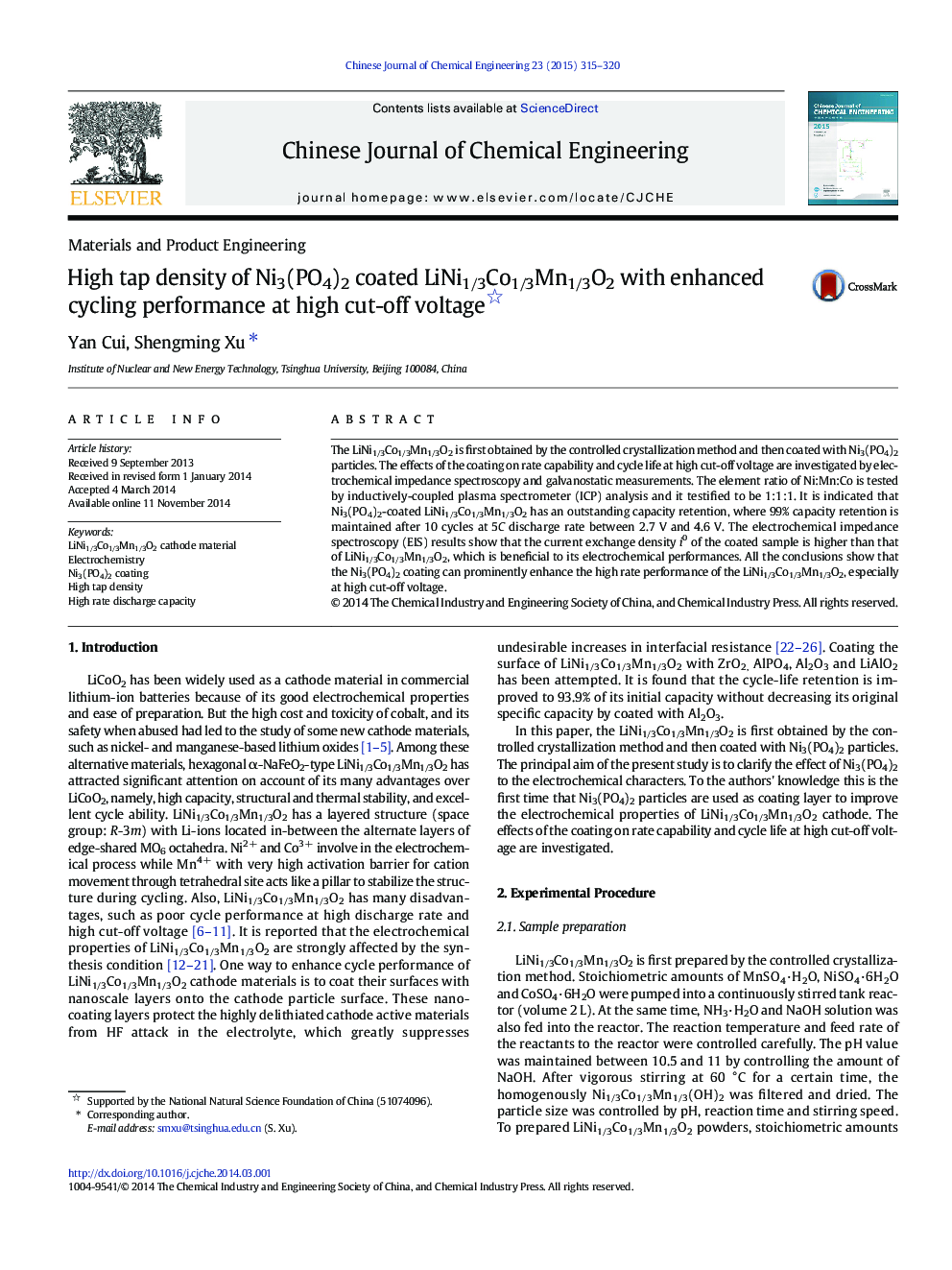| Article ID | Journal | Published Year | Pages | File Type |
|---|---|---|---|---|
| 168168 | Chinese Journal of Chemical Engineering | 2015 | 6 Pages |
The LiNi1/3Co1/3Mn1/3O2 is first obtained by the controlled crystallization method and then coated with Ni3(PO4)2 particles. The effects of the coating on rate capability and cycle life at high cut-off voltage are investigated by electrochemical impedance spectroscopy and galvanostatic measurements. The element ratio of Ni:Mn:Co is tested by inductively-coupled plasma spectrometer (ICP) analysis and it testified to be 1:1:1. It is indicated that Ni3(PO4)2-coated LiNi1/3Co1/3Mn1/3O2 has an outstanding capacity retention, where 99% capacity retention is maintained after 10 cycles at 5C discharge rate between 2.7 V and 4.6 V. The electrochemical impedance spectroscopy (EIS) results show that the current exchange density i0 of the coated sample is higher than that of LiNi1/3Co1/3Mn1/3O2, which is beneficial to its electrochemical performances. All the conclusions show that the Ni3(PO4)2 coating can prominently enhance the high rate performance of the LiNi1/3Co1/3Mn1/3O2, especially at high cut-off voltage.
Graphical AbstractIt is apparent from the figure that there are some cotton-like particles deposited on the surface of LiNi1/3Co1/3Mn1/3O2. These particles are identified as Ni3(PO4)2, and the Ni3(PO4)2 layer reaches about 20 nm. So the HRTEM can further demonstrate the existence of the surface coating of Ni3(PO4)2. The generated HF from the electrolyte attacks the surface of the cathode and accordingly the metal ions in the surface (Ni, Co, Mn) dissolve into the electrolyte. After coating, the existence of Ni3(PO4)2 coating can effectively prevent the fatigue of the particles during the continuously cycling at high voltage and keep the structural stability.Figure optionsDownload full-size imageDownload as PowerPoint slide
